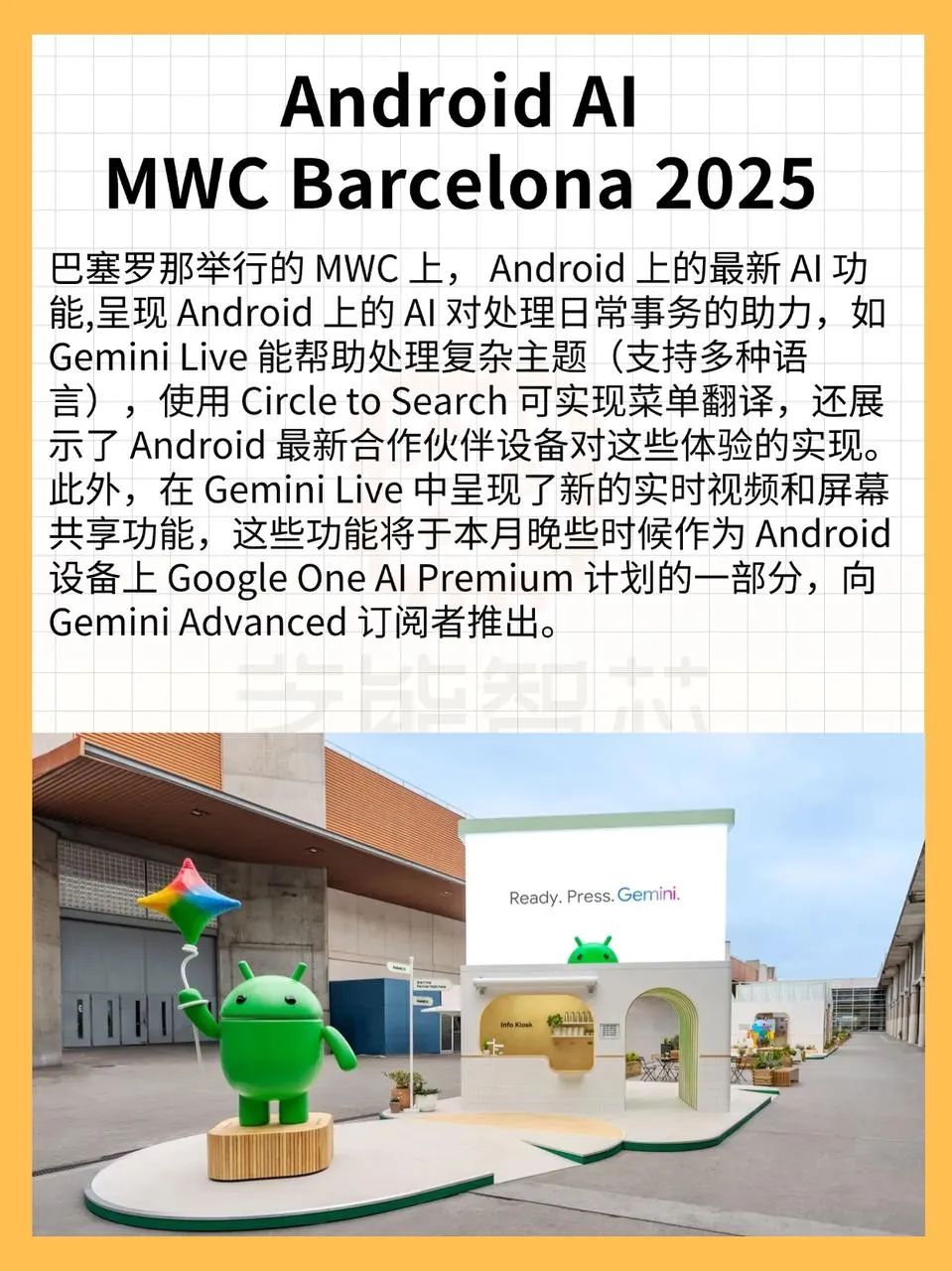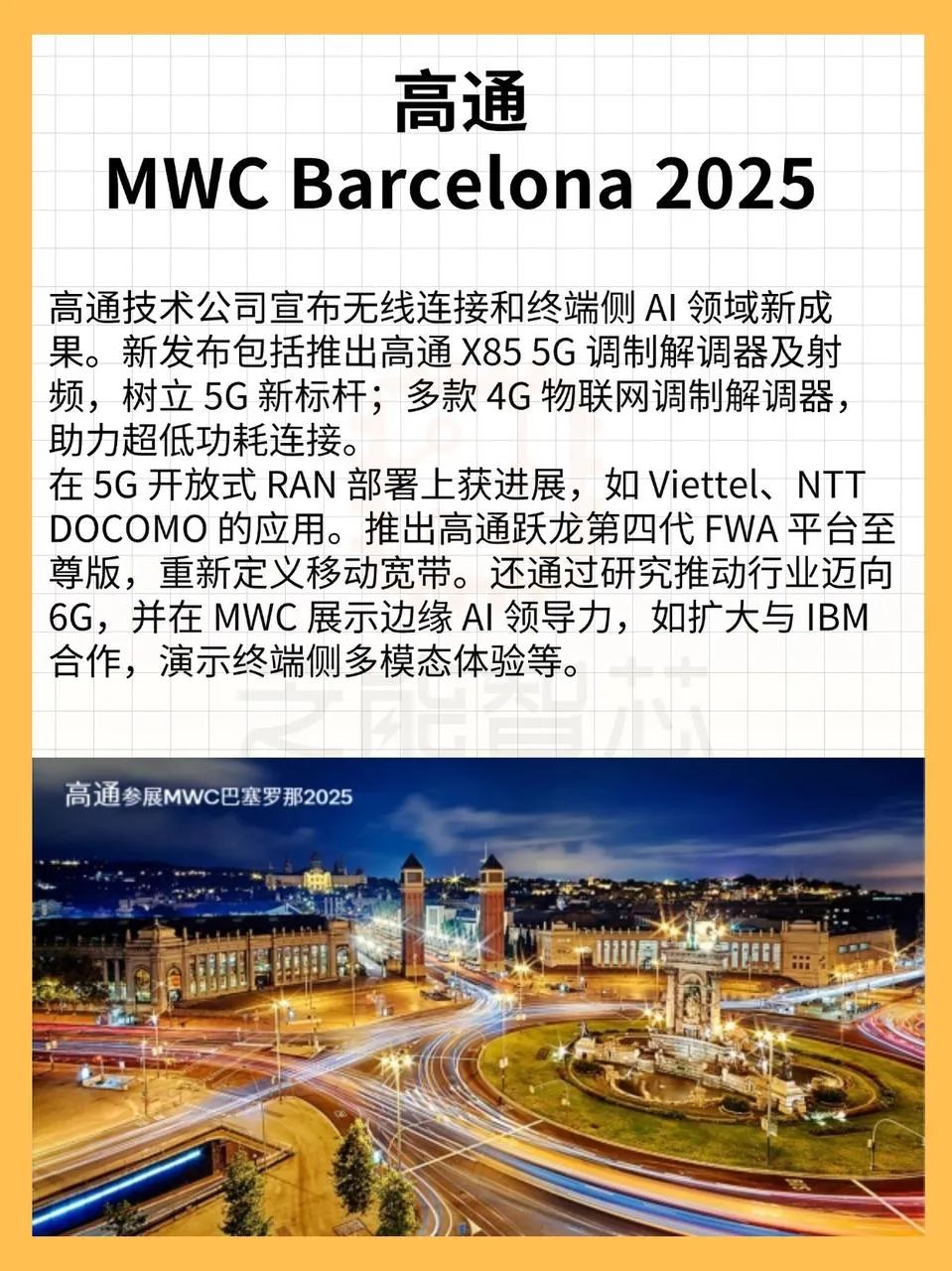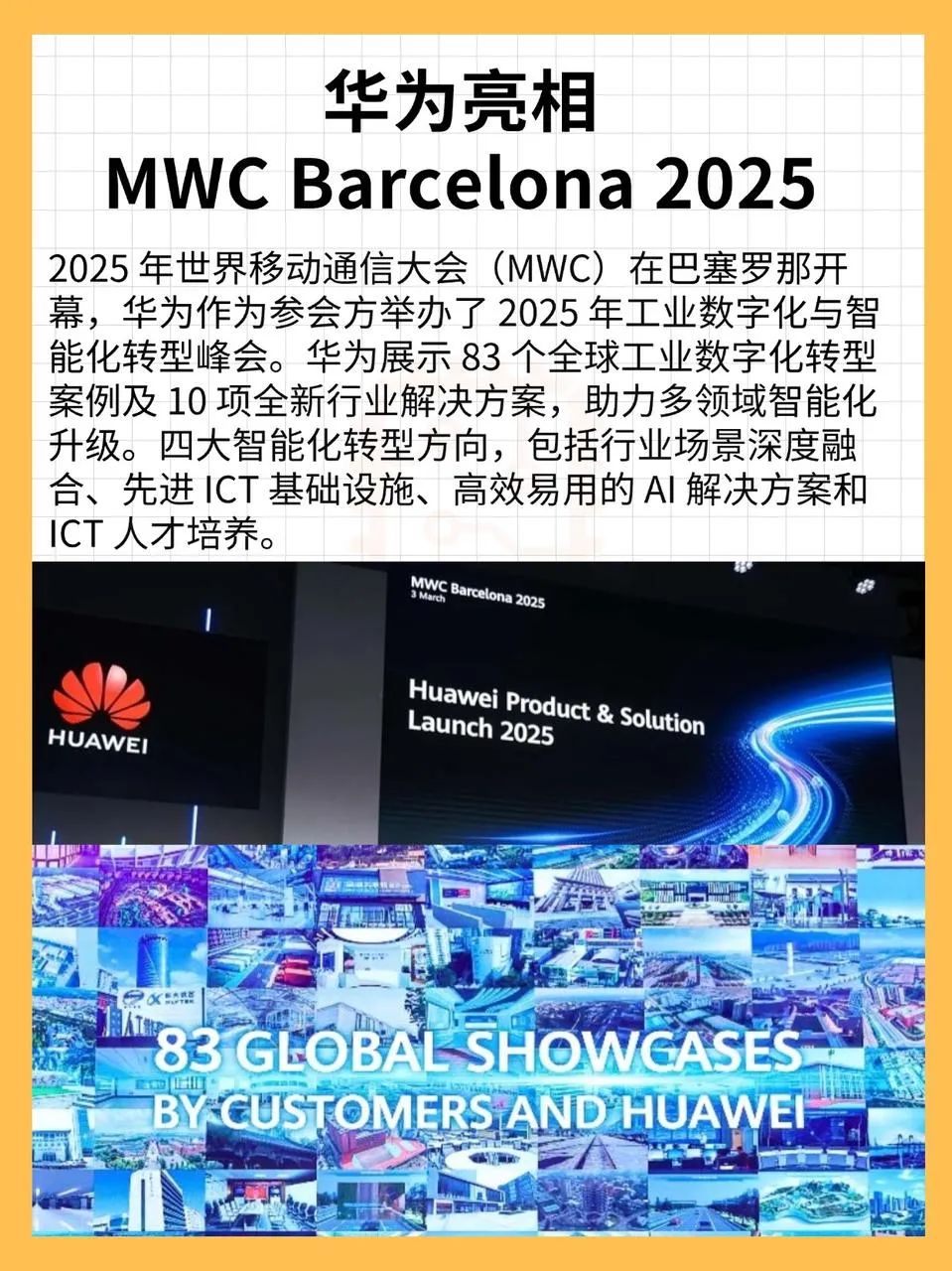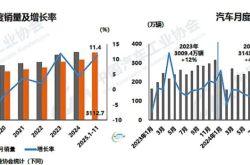MWC 2025: Mobile AI to Become the Engine of the Future
![]() 03/05 2025
03/05 2025
![]() 547
547
Produced by ChiNengZhiXin
The Mobile World Congress (MWC) held in Barcelona from March 3 to 6, 2025, brought mobile artificial intelligence (AI) into the spotlight.
As the world's most influential connectivity technology event, MWC 2025 not only showcased the latest achievements of giants like Qualcomm and Huawei in the fields of 5G and AI but also sparked heated discussions on whether mobile AI is brewing a huge transformation.
Mobile AI is regarded as the next-generation driver of smartphones, the Internet of Things (IoT), and edge computing, but its actual value remains unclear. Qualcomm's X85 5G modem and AI-enhanced platform, and Huawei's 83 cases in industrial intelligent transformation demonstrate the huge technological potential of this field. Of course, this also requires consumers to truly pay for it, unlike using deepseek, where buying new hardware means replacing the device.
We will analyze the current status of technological innovation and market application, as well as the long-term development path of mobile AI, to explore whether it is in a bubble and the possibility of future breakthroughs.

Part 1
Technological Innovation and Market Application:
The Current Status and Potential of Mobile AI
● Mobile AI was undoubtedly a highlight at MWC 2025.
◎ Qualcomm's released X85 5G modem and radio frequency system integrates a hardware tensor accelerator and AI processor, achieving a downlink peak rate of 12.5Gbps and improving energy efficiency and coverage;
◎ Huawei showcased 83 cases of industrial digital transformation covering 71 scenarios such as energy and transportation, and launched 10 industry solutions.
Mobile AI is moving from concept to practical application, especially showing potential in the fields of 5G Advanced, edge computing, and industrial intelligence. However, due to the rapid emergence of technology, the market is still in its early stages, and consumer acceptance has not fully matched the enthusiasm for technology, creating an expectation gap.

● The technological advancements in mobile AI focus on improving hardware performance and enhancing edge computing power.
◎ Qualcomm's X85 platform optimizes network performance through AI, while Huawei integrates AI into ICT infrastructure, emphasizing deep integration into industry scenarios.
This enhancement of "hard power" provides stronger processing capabilities for smartphones, IoT devices, and even Fixed Wireless Access (FWA). For example, Qualcomm's fourth-generation FWA platform, the Premium Edition, integrates 40 TOPS of edge AI computing power, supporting generative AI innovations.
◎ Huawei's AI-enabled devices assist enterprises in managing infrastructure. These technologies not only drive the evolution from 5G to 6G but also lay the foundation for immersive experiences and perception integration.
The leadership in hardware has not directly translated into consumer-perceived value. While it is impressive that smartphones can run large language models (LLM) with billions of parameters, ordinary users may only see it as a "gimmick." Functions such as text summarization or generative images may raise doubts about their practicality after the novelty wears off.
The fragmentation of market applications exacerbates the bubble debate. The market share of high-end smartphones has continued to grow over the past few years, and consumer demand for flagship models has driven the integration of mobile AI. However, the overall smartphone market has become saturated.
Currently, mobile AI is more of a marketing gimmick for high-end chips (such as Qualcomm Snapdragon 8 Premium Edition) and flagship devices rather than an inclusive technology. Take Google Gemini and Apple Intelligence as examples; they integrate AI into the user experience, but practicality evaluations are polarized - for some users, it is a productivity tool, while for others, it is virtually useless.
Although the industrial and enterprise-level applications showcased by Huawei and Qualcomm have promising prospects, their high thresholds and customized needs make it difficult for them to quickly penetrate the mass consumer market. The imbalance in application scenarios has led to an incomplete value chain for mobile AI, which still needs time to refine.

● The complexity of the competitive landscape provides fuel for the development of mobile AI.
◎ Qualcomm has consolidated its connectivity advantage in the Android ecosystem with its modem and edge AI technology,
◎ While Huawei is accelerating its layout in Central Asia, Europe, and other regions through 5G and cloud solutions.
With Apple's closed-loop ecosystem, Google's software advantage, and the low-cost competition from emerging manufacturers, the excitement has just begun. The next phase of mobile AI will see significant changes, accompanied by competition for dominance in standardization and popularization.
Is mobile AI merely an arms race among manufacturers? To be truly driven by user needs, we need to continuously integrate AI into current applications.
Part 2
Long-term Development Path:
The Marathon Journey of Mobile AI
The potential of mobile AI's underlying technology cannot be ignored. The future lies in the transition from "gimmick" to "practicality," a process more akin to a marathon requiring time, investment, and trial and error.
● Agentic AI is seen as a breakthrough direction for mobile AI.
Both Qualcomm and Huawei have emphasized the potential of learning-based AI, which creates personalized intelligent experiences through user behavior training. For example, Qualcomm demonstrated an AI agent on the Snapdragon 8 Premium Edition smartphone that can handle tasks such as music and navigation, while Huawei empowered smart glasses and industrial scenarios through multimodal AI. This "tailored" AI not only enhances user stickiness but also endows devices with greater autonomy.
However, training agentic AI requires time and data accumulation, and users may be reluctant to pay for immaturity in the early stages. For instance, Qualcomm's demonstrated multimodal AI on the device side is eye-catching, but its actual promotion needs to address challenges such as privacy and computing power allocation. This contradiction between long-term investment and short-term returns makes the commercialization path of mobile AI full of uncertainties.
● Collaboration within the industry ecosystem will be key to the maturity of mobile AI.
At MWC 2025, Qualcomm partnered with IBM, NTT DOCOMO, and others to promote open RAN and enterprise-level AI, while Huawei launched industry solutions with global partners, demonstrating the importance of ecosystem construction.
The success of mobile AI depends not only on chip and device manufacturers but also on the cooperation of software developers, network operators, and regulatory agencies.
For example, Qualcomm's 5G O-RAN solution has been deployed in Viettel (Vietnam) and NTT DOCOMO (Japan), but its global promotion still needs to overcome challenges such as spectrum allocation and infrastructure differences. Huawei's 5G deployment in Kazakhstan benefited from government support, highlighting the role of the policy environment in boosting technology implementation. In the future, if mobile AI can form unified standards and open platforms across industries, its value may gradually emerge.
● The ultimate goal of mobile AI is to seamlessly integrate into daily life.
As analysts put it, creating a smart assistant similar to Jarvis in "Iron Man" is the vision of mobile AI.
◎ Qualcomm's FWA platform and Huawei's ICT talent development program indicate that mobile AI is not just a technological upgrade but a change in lifestyle. The realization of this vision requires multiple iterations. For example, current AI applications on smartphones are still auxiliary functions (such as voice recognition and camera optimization) rather than disruptive experiences.
◎ Huawei's concept of "deep integration into industry scenarios" and Qualcomm's idea of "hybrid AI" point to a future where more efficient and intuitive interactions are achieved through edge and cloud collaboration. However, before this happens, the industry must endure the painful period before technology matures, including consumer education, cost reduction, and the enrichment of application scenarios.
Summary
The debut of mobile artificial intelligence at MWC 2025 shines with the aura of next-generation technology. From a technological innovation perspective, Qualcomm and Huawei's breakthroughs have injected vitality into mobile AI, but the fragmentation of market applications and the lack of short-term returns require continuous investment. From a long-term perspective, agentic AI, ecosystem collaboration, and lifestyle integration paint a bright future for mobile AI, but its maturity requires patience and perseverance. It's a marathon, not a sprint!





